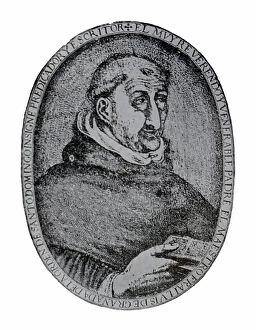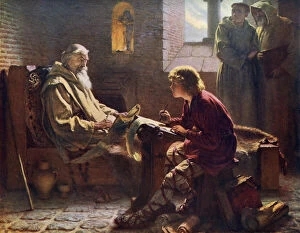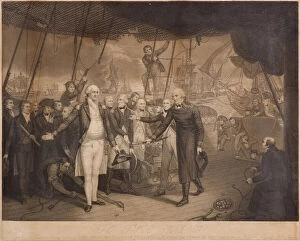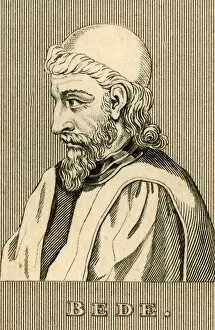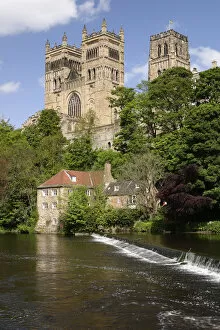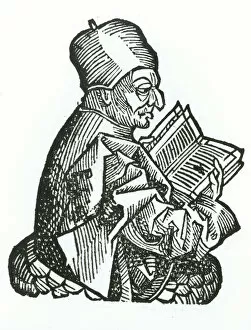The Venerable Collection
"The Venerable Bede: A Legacy of Translation, Victory, and Scholarship" Step back in time to witness the remarkable life and contributions figure known as Bede
For sale as Licensed Images
Choose your image, Select your licence and Download the media
"The Venerable Bede: A Legacy of Translation, Victory, and Scholarship" Step back in time to witness the remarkable life and contributions figure known as Bede. From his humble beginnings as an Anglo-Saxon theologian, scholar, and historian in the 7th century to his lasting impact on history, this caption explores various artistic depictions that capture his essence. In James Doyle Penrose's 1926 artwork "The Venerable Bede Translating the Last Chapter of St John, " we see a dedicated scholar engrossed in translating sacred texts. This portrayal highlights Bede's commitment to preserving knowledge for future generations. Moving forward through time, Pierre Toussaint's watercolor on ivory from around 1825 showcases a dignified portrait of Bede. His wise countenance reflects the depth of his intellect and devotion to learning. The mention of Lord Viscount Duncan's victory over Admiral De Winter reminds us that even centuries after his passing, Bede continued to inspire greatness. The mezzotint print "The Victory of Lord Duncan" immortalizes this historic event where bravery triumphed against all odds. As we delve deeper into history with an engraving from c1584 and another from 1493 by unknown artists, it becomes evident that Bede's influence transcended time itself. These images depict him surrounded by books – symbols not only of scholarship but also spiritual enlightenment. Durham Cathedral stands tall as a testament to both faith and architectural brilliance. It serves as a reminder that within its hallowed walls lies one of Britain's most treasured artifacts – Bede's chair from Jarrow Abbey circa 1920s. This simple wooden seat holds immense significance as it is believed to be where he penned many influential works. Finally, Hartmann Schedel’s iconic woodcut illustration from Liber Chronicarum (1493) transports us back further still. Here, Bede's image is immortalized alongside other historical figures.

